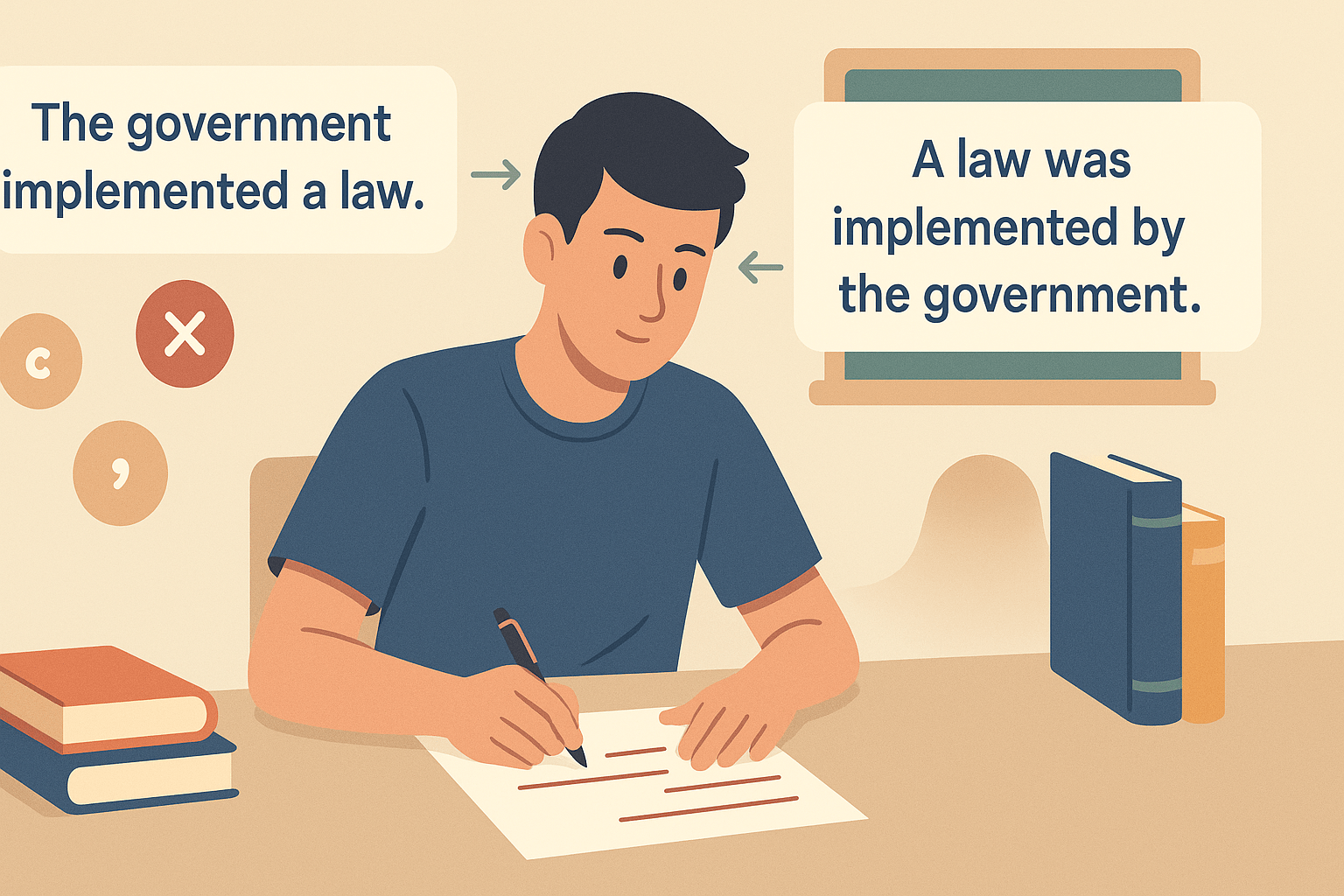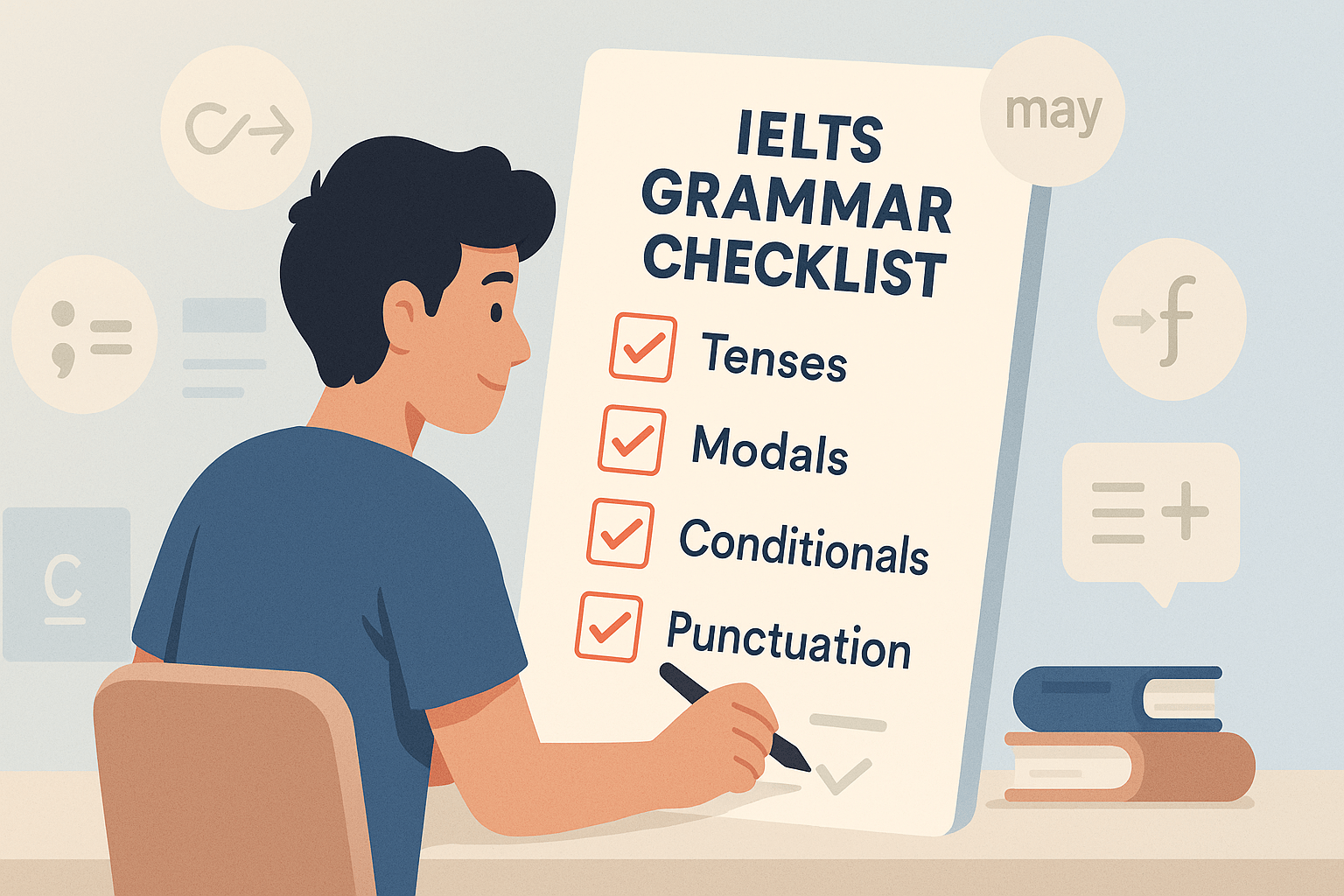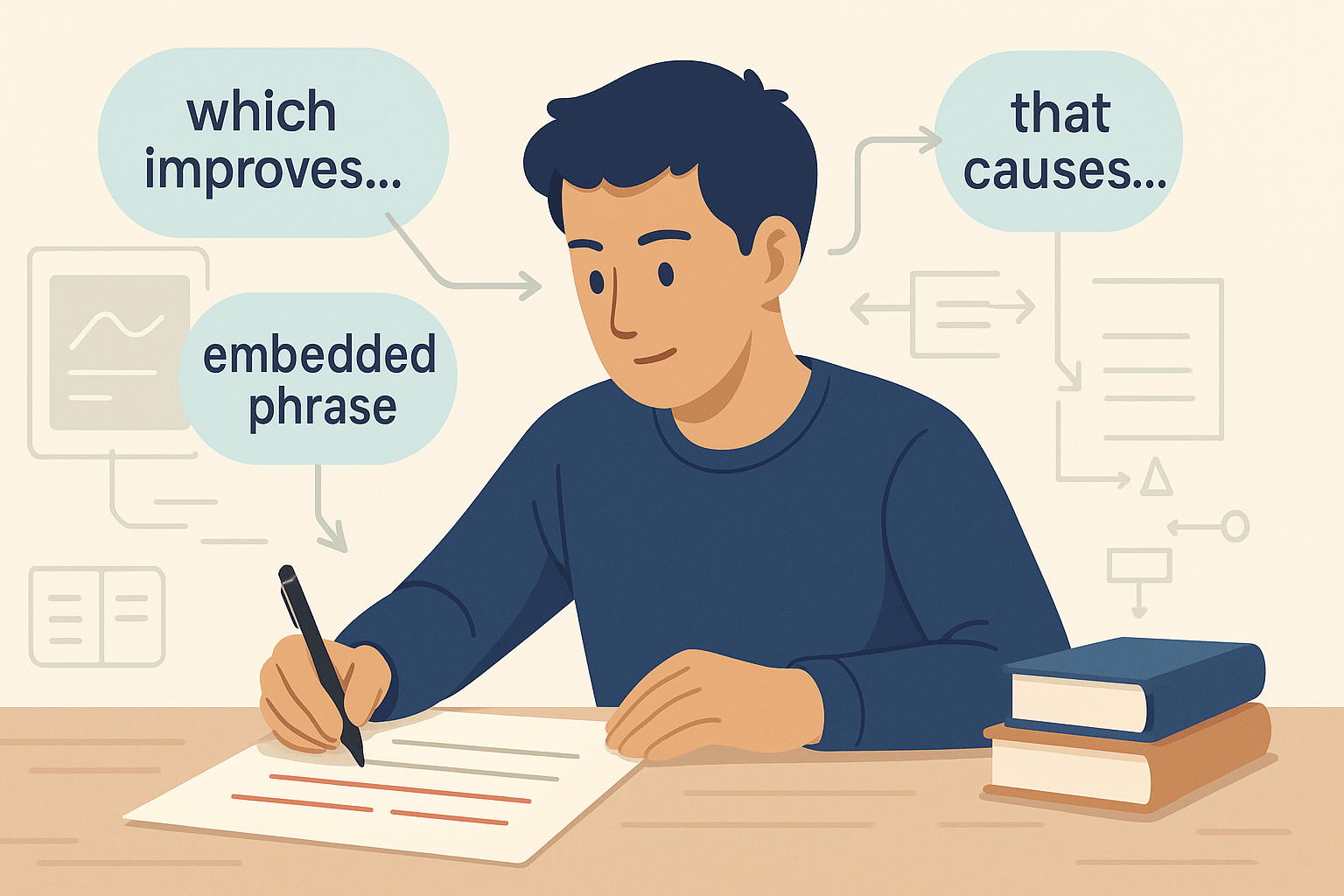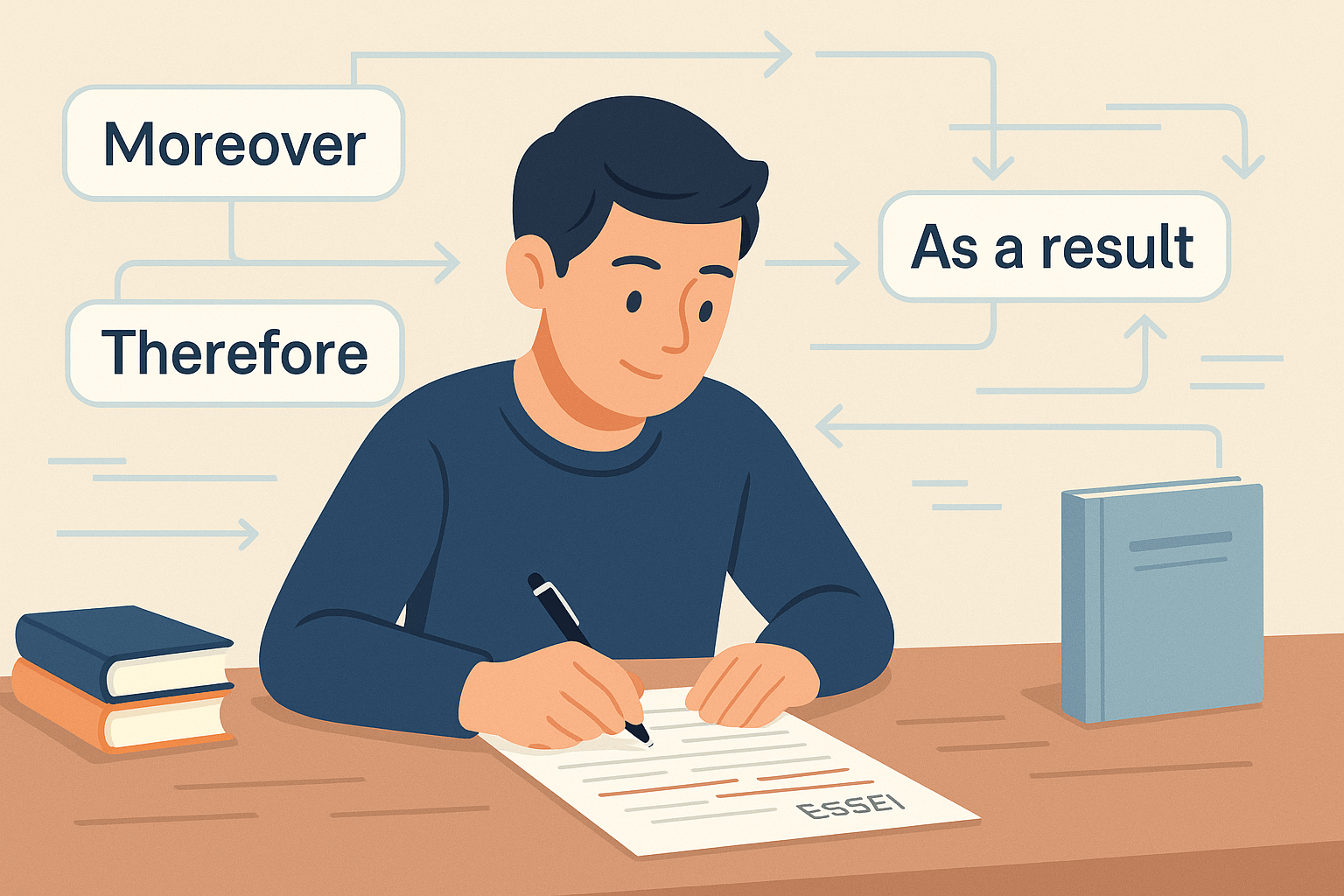When I guide my IELTS students, one grammar question comes up often: “Should I use active or passive voice in my Task 2 essay?”
The truth is, both voices are important.
- Active voice keeps your writing direct and clear
- Passive voice makes your writing formal and objective, which is useful in academic contexts
Mastering IELTS active voice and passive voice writing will improve your Grammatical Range and Accuracy, which makes up 25% of your Writing Task 2 band score.
In this guide, I’ll teach you:
- ✅ The difference between active and passive voice
- ✅ When to use each voice in Task 2 essays
- ✅ Examples from problem/solution and formal essays
- ✅ Common mistakes and how to avoid them
If you want to combine this with vocabulary for formal essays, see my IELTS Writing Task 2 Vocabulary for Band 7–9 for natural academic expressions.
What is Active and Passive Voice?
Understanding the difference is the first step to using both voices effectively.
- Active Voice: The subject performs the action.
Example: “The government implemented a new law.” - Passive Voice: The subject receives the action.
Example: “A new law was implemented by the government.”
In IELTS Writing Task 2:
- Active voice = clear and straightforward → great for opinions and examples
- Passive voice = formal and objective → great for academic tone and when the actor is less important
When to Use Active Voice in IELTS Writing
1. Giving Opinions and Arguments
IELTS Task 2 often requires you to present your viewpoint.
Example (Active Voice):
“I strongly believe that governments should invest in renewable energy.”
Why it works:
- ✅ Direct and clear
- ✅ Shows confidence in your opinion
- ✅ Fits agree/disagree or opinion essays
2. Explaining Causes and Examples
Active voice is perfect for explaining cause-effect relationships.
Example:
“Increasing traffic congestion affects urban health and air quality.”
Teacher Tip:
Use active voice for clarity and flow, especially in body paragraphs.
When to Use Passive Voice in IELTS Writing
1. Formal and Objective Statements
Passive voice is excellent for formal tone, especially when:
- The doer is unknown or unimportant
- You want to emphasize the action or result
Example:
“Environmental regulations were introduced to reduce pollution.”
2. Problem and Solution Essays
Problem/solution essays often highlight actions or results, making passive voice useful.
Example:
“New recycling systems should be implemented to reduce household waste.”
- ✅ Focuses on the solution, not the actor
- ✅ Sounds academic and objective
3. Describing General Truths or Policies
In formal writing, policies or facts are often expressed in passive voice.
Example:
“Taxes are collected annually to support public services.”
Mixing Active and Passive for Band 9 Writing
High-scoring essays balance both voices naturally:
Sample Paragraph (Band 9 Style):
“Traffic congestion in major cities affects both the environment and public health. To address this, stricter regulations should be implemented by local governments. In addition, public transport networks must be expanded to reduce private car use.”
Why this works:
- ✅ Starts with active voice for clarity
- ✅ Shifts to passive voice for solutions and formality
- ✅ Demonstrates grammatical range to the examiner
Common Mistakes with Active and Passive Voice
Many students lose marks because of these errors:
- Overusing passive voice → Makes sentences long and hard to read
Wrong: “The action was taken by the government to improve the economy.”
Better: “The government took action to improve the economy.” - Mixing active and passive in one clause → Creates confusion
Wrong: “Pollution was caused by cars and affects people’s health.”
Correct: “Pollution is caused by cars and affects people’s health.” - Using passive voice unnecessarily → Avoid if the actor is important
Wrong: “A decision was made.” (Who made it?)
Better: “The council made a decision.”
Quick Practice Exercise
Rewrite these sentences using the correct voice for IELTS Writing Task 2:
- “They build new schools every year.” → Passive: “New schools are built every year.”
- “Environmental laws were passed by the government.” → Active: “The government passed environmental laws.”
FAQ Section
Q1: Should I use more active or passive voice in IELTS Writing Task 2?
Use both, but active voice should dominate. Passive voice is best for formal solutions or academic tone.
Q2: Does using passive voice increase my IELTS writing score?
Yes, if used correctly. It shows grammatical range, but overuse can reduce clarity.
Q3: How can I practice active and passive voice for IELTS?
Rewrite sample essays, converting active sentences to passive and vice versa, until you can switch naturally.
Conclusion
Mastering IELTS active voice and passive voice writing is essential for Band 7–9 essays.
When you:
- ✅ Use active voice for clarity and strong arguments
- ✅ Apply passive voice for formal tone and solutions
- ✅ Avoid common mistakes
… your writing will be clear, academic, and examiner-friendly.
🔗 Next step: Practice by combining active and passive sentences in your own essays, and pair this with our IELTS Writing Task 2 Vocabulary for Band 7–9 for maximum impact.






2 Responses
I have been surfing online more than 3 hours today yet I never found any interesting article like yours It is pretty worth enough for me In my opinion if all web owners and bloggers made good content as you did the web will be much more useful than ever before
Your blog is a true hidden gem on the internet. Your thoughtful analysis and in-depth commentary set you apart from the crowd. Keep up the excellent work!